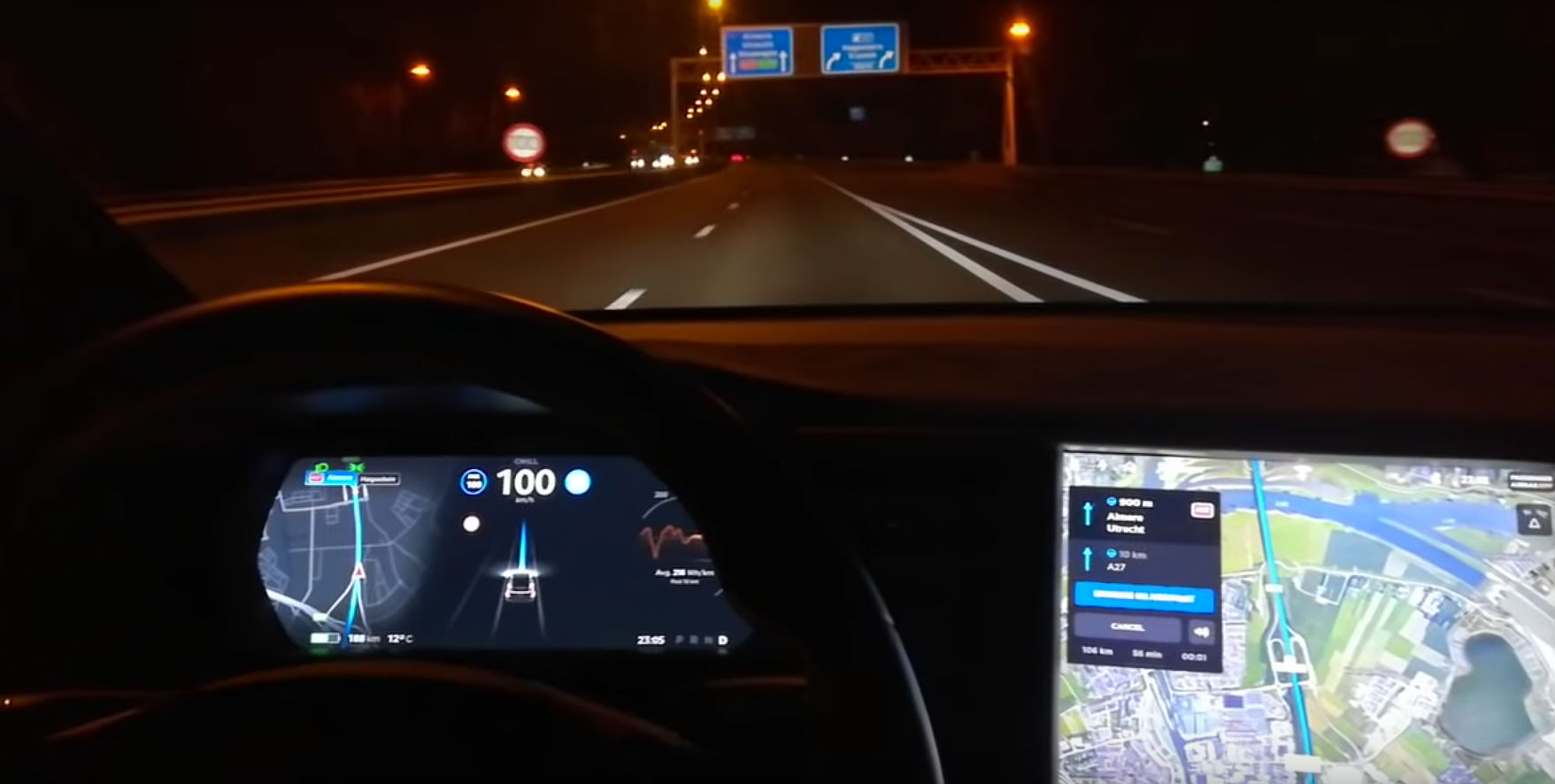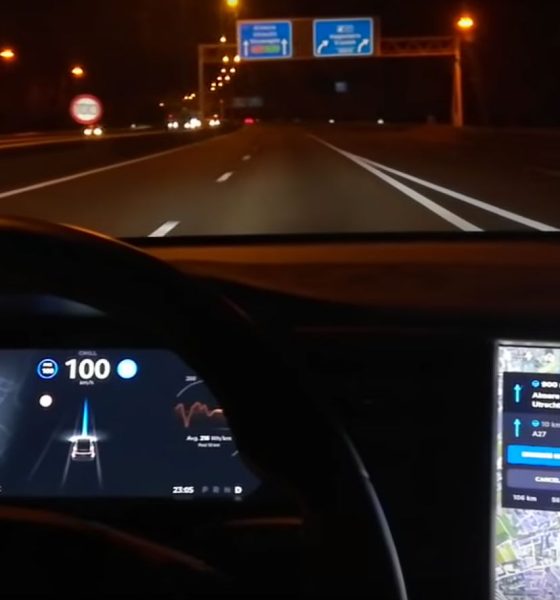

News
Tesla MIT study concludes that drivers maintain vigilance when using Autopilot
Tesla owners using Autopilot are highly engaged when driving with the feature despite fears to the contrary, according to a study recently published by scientists at MIT titled Human Side of Tesla Autopilot: Exploration of Functional Vigilance in Real-World Human-Machine Collaboration.
The data used in the study was generated from the over 1 billion miles driven by Tesla owners since its activation in 2015, about 35% of which were determined to be assisted by Autopilot. Of these, 18,928 disengagements of Autopilot were annotated, which indicated instances when drivers took over during challenging driving situations. Overall, the numbers demonstrate a high rate of driver vigilance.
Tesla has provided a unique opportunity to form a baseline for objective, representative analysis of real-world use of Autopilot, as stated in the study:
“Due to its scale of deployment and individual utilization, [Tesla’s] Autopilot serves as perhaps the currently best available opportunity to study and understand human interaction with AI assisted vehicles ‘in the wild’…naturalistic driving research can now begin investigating and identify both promising and concerning trends in drivers’ behavioral patterns in the context of Autopilot.”

As automation has expanded over the last several decades, a pattern of overtrust in reliable automated systems has been shown by human behavior research studies. In the context of driving scenarios where property damage, injury, or death are possible consequences, the concern with the transition to semi-autonomous systems relying on driver input to function safely is obviously significant. The results of the MIT study are therefore promising, initially showing an approach to automation in driving systems that’s more careful than other areas.
“The two main results of this work are that (1) drivers elect to use Autopilot for a significant percent of their driven miles and (2) drivers do not appear to over-trust the system to a degree that results in significant functional vigilance degradation in their supervisory role of system operation,” the MIT scientists concluded.
The study further notes that more research will be needed as more data becomes available and more familiarity grows with Autopilot’s features.
Tesla has received a fair amount of criticism and attention whenever an accident involves one of its cars, especially if Autopilot was engaged around the time of the event. However, Tesla consistently maintains its position that the feature is not yet fully autonomous and requires drivers to both pay attention and intervene when necessary while Autopilot is in operation. The program is additionally equipped with several alerts which give drivers audio and visual warnings if hands are not detected on the steering wheel, something found to have been ignored in some prior crash events, playing into concerns the MIT study sought to address.

Beginning in Q3 2018, Tesla has been releasing quarterly Vehicle Safety Reports providing updated numbers for vehicle incidents occurring both when Autopilot was engaged and when the driver-assist feature was deactivated. For Q3, the company reported one accident or crash-like event for every 3.34 million miles driven with Autopilot active and one event for every 1.92 million miles driven with Autopilot disengaged. In Q4 2018, those numbers dropped slightly, possibly due to winter conditions, to one accident for every 2.91 million miles driven with Autopilot engaged and one accident for every 1.58 million miles driven without.
By comparison, the National Highway Traffic Safety Administration’s (NHTSA) most recent data at the time showed a crash event every 436,000 miles, a figure which includes all vehicles in the US whether or not the cars are equipped with driving enhancement software. Tesla’s numbers further include both accidents that have occurred and “near-misses”, and the NHTSA’s figures only include accidents that actually transpired.
Along with touting a correlation between lower accident rates and Autopilot being engaged, Tesla also maintains its title of producing the safest cars in the world based on NHTSA test results.

Cybertruck
Tesla updates Cybertruck owners about key Powershare feature

Tesla is updating Cybertruck owners on its timeline of a massive feature that has yet to ship: Powershare with Powerwall.
Powershare is a bidirectional charging feature exclusive to Cybertruck, which allows the vehicle’s battery to act as a portable power source for homes, appliances, tools, other EVs, and more. It was announced in late 2023 as part of Tesla’s push into vehicle-to-everything energy sharing, and acting as a giant portable charger is the main advantage, as it can provide backup power during outages.
Cybertruck’s Powershare system supports both vehicle-to-load (V2L) and vehicle-to-home (V2H), making it flexible and well-rounded for a variety of applications.
However, even though the feature was promised with Cybertruck, it has yet to be shipped to vehicles. Tesla communicated with owners through email recently regarding Powershare with Powerwall, which essentially has the pickup act as an extended battery.
Powerwall discharge would be prioritized before tapping into the truck’s larger pack.
However, Tesla is still working on getting the feature out to owners, an email said:
“We’re writing to let you know that the Powershare with Powerwall feature is still in development and is now scheduled for release in mid-2026.
This new release date gives us additional time to design and test this feature, ensuring its ability to communicate and optimize energy sharing between your vehicle and many configurations and generations of Powerwall. We are also using this time to develop additional Powershare features that will help us continue to accelerate the world’s transition to sustainable energy.”
Owners have expressed some real disappointment in Tesla’s continuous delays in releasing the feature, as it was expected to be released by late 2024, but now has been pushed back several times to mid-2026, according to the email.
Foundation Series Cybertruck buyers paid extra, expecting the feature to be rolled out with their vehicle upon pickup.
Cybertruck’s Lead Engineer, Wes Morrill, even commented on the holdup:
As a Cybertruck owner who also has Powerwall, I empathize with the disappointed comments.
To their credit, the team has delivered powershare functionality to Cybertruck customers who otherwise have no backup with development of the powershare gateway. As well as those with solar…
— Wes (@wmorrill3) December 12, 2025
He said that “it turned out to be much harder than anticipated to make powershare work seamlessly with existing Powerwalls through existing wall connectors. Two grid-forming devices need to negotiate who will form and who will follow, depending on the state of charge of each, and they need to do this without a network and through multiple generations of hardware, and test and validate this process through rigorous certifications to ensure grid safety.”
It’s nice to see the transparency, but it is justified for some Cybertruck owners to feel like they’ve been bait-and-switched.
News
Tesla’s northernmost Supercharger in North America opens

Tesla has opened its northernmost Supercharger in Fairbanks, Alaska, with eight V4 stalls located in one of the most frigid cities in the U.S.
Located just 196 miles from the Arctic Circle, Fairbanks’s average temperature for the week was around -12 degrees Fahrenheit. However, there are plenty of Tesla owners in Alaska who have been waiting for more charging options out in public.
There are only 36 total Supercharger stalls in Alaska, despite being the largest state in the U.S.
Eight Superchargers were added to Fairbanks, which will eventually be a 48-stall station. Tesla announced its activation today:
North America’s northernmost Supercharger Fairbanks, AK (8 stalls) opened to public. https://t.co/M4l04DZ6B5 pic.twitter.com/zyL6bDuA93
— Tesla Charging (@TeslaCharging) December 12, 2025
The base price per kWh is $0.43 at the Fairbanks Supercharger. Thanks to its V4 capabilities, it can charge at speeds up to 325 kW.
Despite being the northernmost Supercharger in North America, it is not even in the Top 5 northernmost Superchargers globally, because Alaska is south of Norway. The northernmost Supercharger is in Honningsvåg, Norway. All of the Top 5 are in the Scandanavian country.
Tesla’s Supercharger expansion in 2025 has been impressive, and although it experienced some early-quarter slowdowns due to V3-to-V4 hardware transitions, it has been the company’s strongest year for deployments.
🚨🚨 Tesla Supercharging had a HUGE year, and they deserve to be recognized.
🍔 Opened Tesla Diner, a drive-in movie theater with awesome, Chef-curated cuisine
🔌 Gave access to Superchargers to several EV makers, including Hyundai, Genesis, Mercedes-Benz, Kia, Lucid, Toyota,… pic.twitter.com/yYT2QEbqoW
— TESLARATI (@Teslarati) December 10, 2025
Through the three quarters of 2025, the company has added 7,753 stations and 73,817 stalls across the world, a 16 percent increase in stations and an 18 percent increase in stalls compared to last year.
Tesla is on track to add over 12,000 stalls for the full year, achieving an average of one new stall every hour, an impressive statistic.
Recently, the company wrapped up construction at its Supercharger Oasis in Lost Hills, California, a 168-stall Supercharger that Tesla Solar Panels completely power. It is the largest Supercharger in the world.
News
Tesla shocks with latest Robotaxi testing move
Why Tesla has chosen to use a couple of Model S units must have a reason; the company is calculated in its engineering and data collection efforts, so this is definitely more than “we just felt like giving our drivers a change of scenery.”

Tesla Model S vehicles were spotted performing validation testing with LiDAR rigs in California today, a pretty big switch-up compared to what we are used to seeing on the roads.
Tesla utilizes the Model Y crossover for its Robotaxi fleet. It is adequately sized, the most popular vehicle in its lineup, and is suitable for a wide variety of applications. It provides enough luxury for a single rider, but enough room for several passengers, if needed.
However, the testing has seemingly expanded to one of Tesla’s premium flagship offerings, as the Model S was spotted with the validation equipment that is seen entirely with Model Y vehicles. We have written several articles on Robotaxi testing mules being spotted across the United States, but this is a first:
🚨 Tesla is using Model S vehicles fitted with LiDAR rigs to validate FSD and Robotaxi, differing from the Model Ys that it uses typically
Those Model Y vehicles have been on the East Coast for some time. These Model S cars were spotted in California https://t.co/CN9Bw5Wma8 pic.twitter.com/UE55hx5mdd
— TESLARATI (@Teslarati) December 11, 2025
Why Tesla has chosen to use a couple of Model S units must have a reason; the company is calculated in its engineering and data collection efforts, so this is definitely more than “we just felt like giving our drivers a change of scenery.”
It seems to hint that Tesla could add a premium, more luxury offering to its Robotaxi platform eventually. Think about it: Uber has Uber Black, Lyft has Lyft Black. These vehicles and services are associated with a more premium cost as they combine luxury models with more catered transportation options.
Tesla could be testing the waters here, and it could be thinking of adding the Model S to its fleet of ride-hailing vehicles.
Reluctant to remove the Model S from its production plans completely despite its low volume contributions to the overall mission of transitioning the world to sustainable energy, the flagship sedan has always meant something. CEO Elon Musk referred to it, along with its sibling Model X, as continuing on production lines due to “sentimental reasons.”
However, its purpose might have been expanded to justify keeping it around, and why not? It is a cozy, premium offering, and it would be great for those who want a little more luxury and are willing to pay a few extra dollars.
Of course, none of this is even close to confirmed. However, it is reasonable to speculate that the Model S could be a potential addition to the Robotaxi fleet. It’s capable of all the same things the Model Y is, but with more luxuriousness, and it could be the perfect addition to the futuristic fleet.








